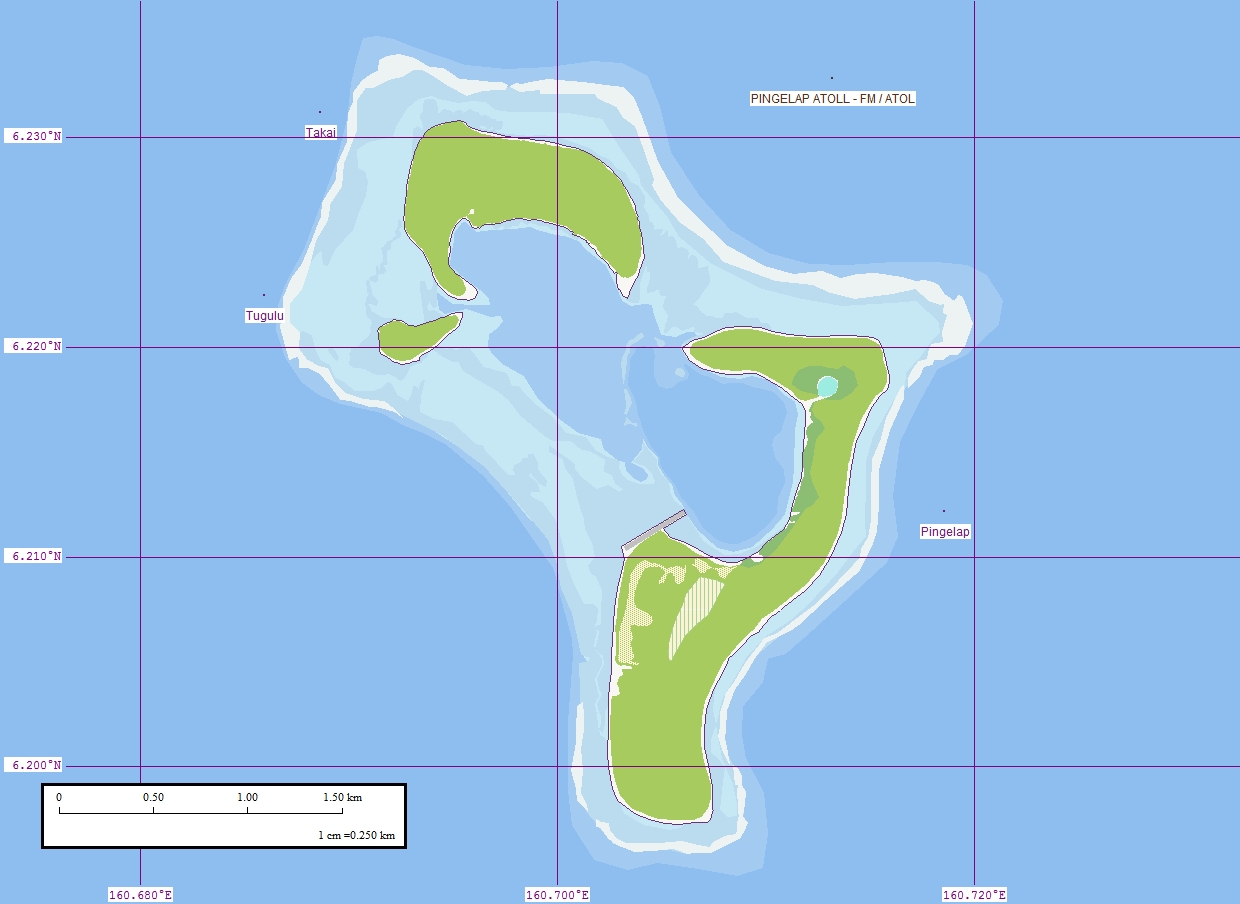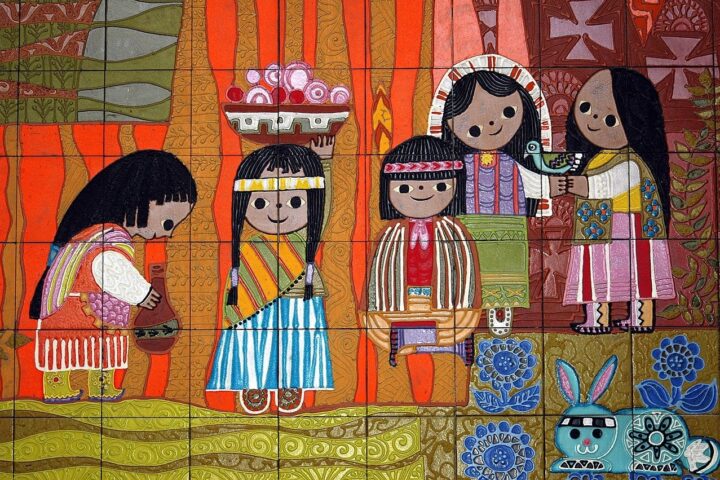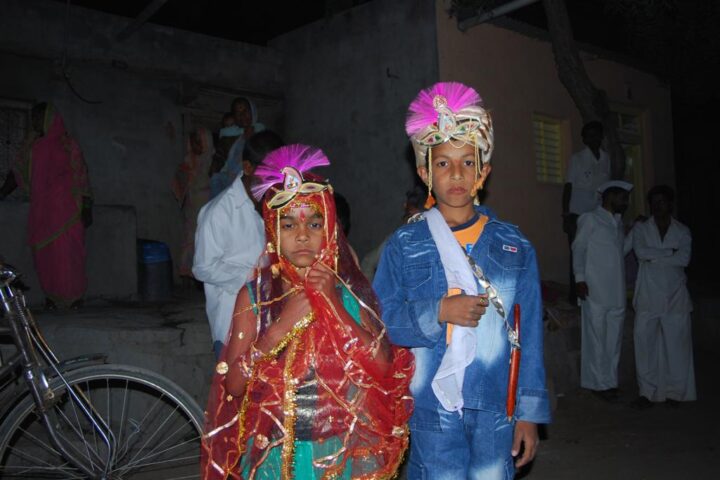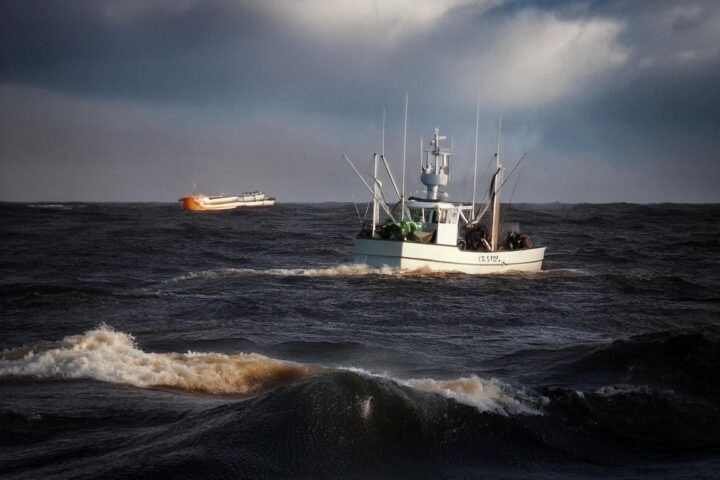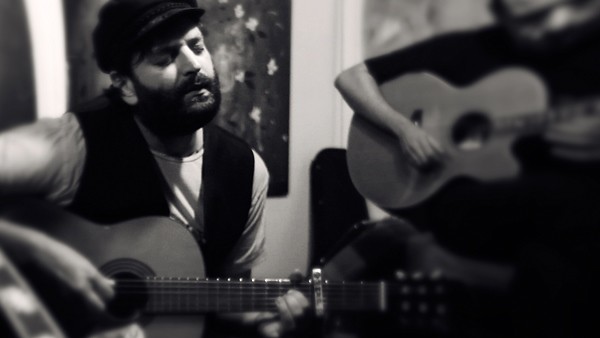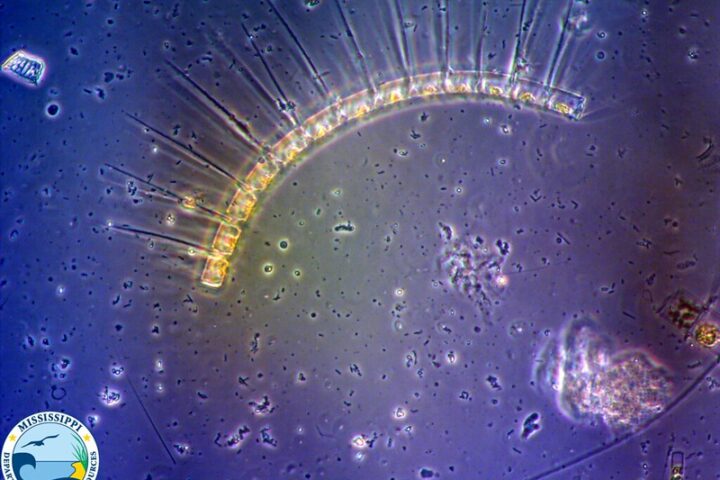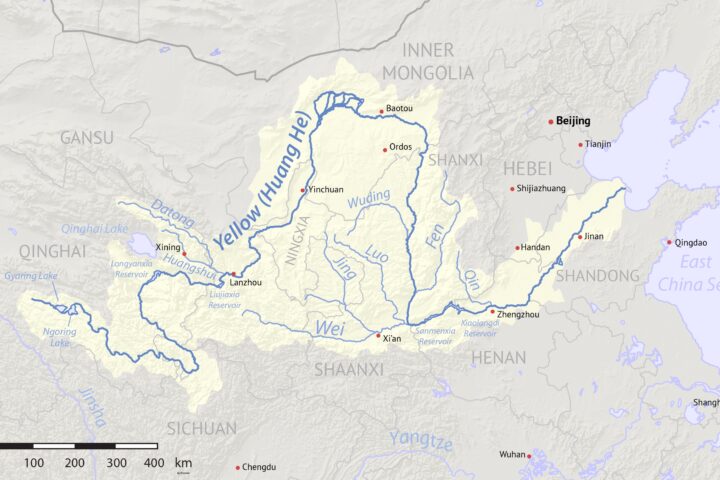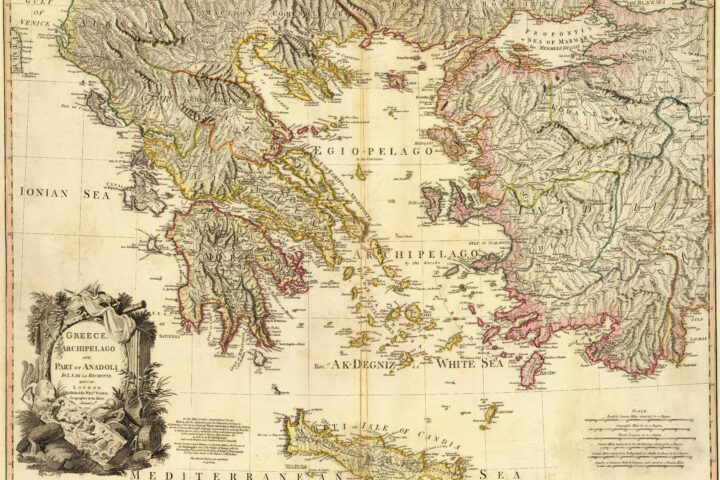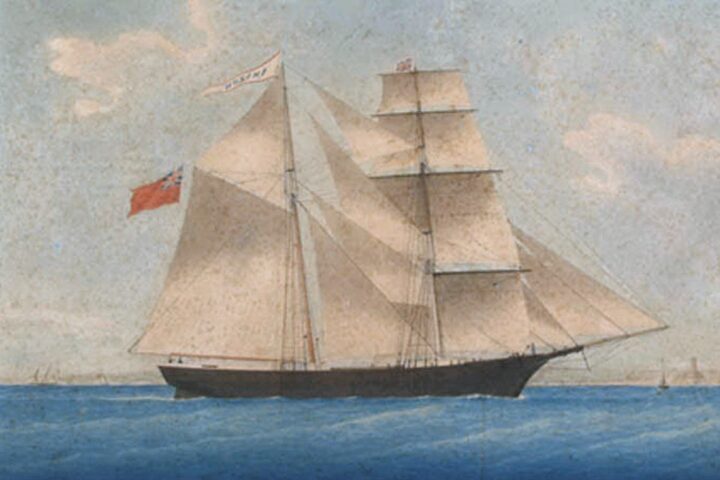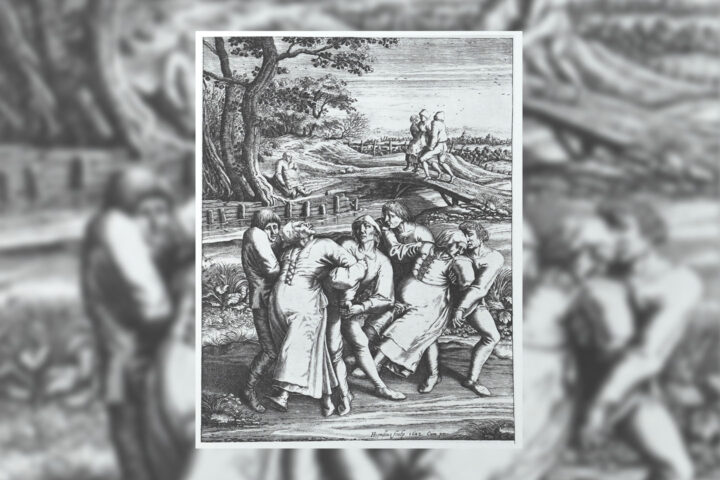Source: Wikimedia_Pingelap_By Mr Minton
A Pacific Paradox
Nestled in the heart of Micronesia, the unassuming Pingelap Atoll harbors a remarkable secret. Often referred to as the “Island of the Colorblind,” this tiny speck of land has captured the attention of scientists and artists alike due to an extraordinary genetic anomaly.
The island’s peculiar moniker stems from a devastating typhoon that struck in 1775, decimating the population and creating a genetic bottleneck. One of the few survivors, the island’s ruler, carried a rare gene for complete achromatopsia, a condition characterized by the complete absence of color vision. Over centuries, this gene was passed down to subsequent generations, resulting in an unusually high prevalence of color blindness among the islanders. Today, it’s estimated that around 10% of Pingelap’s inhabitants share this unique genetic trait, a rate exponentially higher than the global average of one in 30,000.
A World Without Color
Living in a world without color is an almost incomprehensible concept for most people. For the inhabitants of Pingelap, however, it is their reality. While some individuals with achromatopsia might perceive slight variations in hue, such as shades of red or blue, the majority experience the world in shades of gray.
Belgian photographer Sanne De Wilde was drawn to this extraordinary community, seeking to understand and visually represent the world through the eyes of the color blind. During a visit to Pingelap in 2015, De Wilde embarked on a photographic project to capture the island’s unique perspective. By employing infrared photography and other techniques, she was able to create images that approximated the visual experience of achromatopsia.
De Wilde’s work goes beyond mere documentation. It’s an invitation to step into the shoes of those who perceive the world differently. By collaborating with the islanders, she created a series of images that blurred the lines between reality and perception. Some of the photographs were later painted over by achromats, offering a glimpse into their subjective interpretation of color.
A Broader Perspective
The story of Pingelap is more than just a scientific curiosity or an artistic endeavor. It’s a powerful exploration of the human condition. The island’s inhabitants have adapted to their visual limitations, developing unique coping mechanisms and cultural perspectives. Their experiences challenge our assumptions about vision and perception, forcing us to consider the complexities of human experience.
De Wilde’s work extends beyond Pingelap. Her subsequent projects on albinism and dwarfism continue to explore the intersection of genetics, geography, and social stigma. By focusing on marginalized communities, she sheds light on the challenges faced by individuals with unique physical characteristics.
Ultimately, the story of Pingelap is a reminder of the diversity of human experience. It’s a testament to the human spirit’s ability to adapt, overcome, and find beauty in unexpected places. As we gaze upon the world around us, we are often so accustomed to our own perception that we fail to consider the alternative realities experienced by others. The Island of the Colorblind invites us to broaden our horizons, to see the world through a different lens, and to appreciate the richness of human experience in all its forms.
Where Color is a Myth
The Micronesian island of Pingelap, a tranquil paradise nestled in the South Pacific, harbors a unique and extraordinary secret. Often referred to as the “Island of the Colorblind,” Pingelap has captured the world’s imagination due to an unprecedented concentration of achromatopsia, a rare genetic condition that renders individuals completely colorblind.
This peculiar phenomenon can be traced back to a devastating typhoon that ravaged the island in 1775. The catastrophe decimated the population, leaving a small group of survivors, one of whom carried the gene for achromatopsia. Through the ensuing generations, this genetic anomaly was passed down, resulting in a disproportionately high number of color-blind inhabitants. Today, approximately 10% of Pingelap’s population lives without color vision, a stark contrast to the global prevalence of one in 30,000.
The absence of color on Pingelap has profoundly shaped the islanders’ perception of the world. While some individuals with achromatopsia claim to perceive subtle variations in hue, the majority experience life in a monochrome palette. This unique condition has sparked the interest of scientists, artists, and anthropologists alike, eager to understand the implications of living without color.
Belgian photographer Sanne De Wilde was captivated by the island’s enigmatic story. Her photographic project aimed to offer a glimpse into the world as seen through the eyes of the color blind. By employing specialized techniques, such as infrared photography, De Wilde created images that approximated the visual experience of achromatopsia. These haunting photographs challenged conventional perceptions of color and invited viewers to empathize with the islanders’ reality.
De Wilde’s work, however, went beyond mere documentation. She collaborated with the Pingelapese people, inviting them to interpret her photographs through their own visual lens. By allowing them to paint over the images, she created a powerful dialogue between art and perception. This collaborative process revealed the subjective nature of color and challenged the notion of a universal color experience.
The story of Pingelap extends beyond the realm of genetics and vision. It’s a tale of resilience, adaptation, and the human spirit. The islanders have found ways to thrive despite their visual limitations, developing unique cultural practices and coping mechanisms. Their lives are a testament to the extraordinary capacity of humans to adapt to their environment.
Pingelap serves as a powerful reminder of the diversity of human experience. It invites us to question our own perceptions and to appreciate the richness of the world, even in its simplest forms. As we navigate an increasingly interconnected world, understanding and respecting differences have never been more important. The island of Pingelap offers a profound lesson in empathy and the power of the human spirit.

Source-https://education.nationalgeographic.org/resource/island-colorblind-paradise-has-different-hue/
Life in Black and White
Living without color presents a unique set of challenges for the Pingelapese people. Everyday tasks that most take for granted, such as identifying ripe fruit or distinguishing between different types of fish, become significantly more complex. The inability to perceive color can also impact social interactions, as color is often used as a form of nonverbal communication.
Despite these obstacles, the islanders have developed remarkable adaptations. They rely heavily on other sensory cues, such as shape, texture, and smell, to differentiate between objects. For instance, they might learn to identify different types of fish by their scales or the way they swim. The close-knit community on Pingelap also plays a crucial role in supporting individuals with achromatopsia. Knowledge about the environment is shared collectively, ensuring that everyone has the information they need to navigate daily life.
The condition has also had a profound impact on the island’s culture. Color, which is a central element in many societies, holds a different significance for the Pingelapese. Their art, for example, is often characterized by its simplicity and focus on form and texture. The absence of color has forced them to find creative ways to express themselves, leading to a unique artistic style.
Furthermore, the high prevalence of achromatopsia has sparked interest among scientists and researchers. Studies on the Pingelapese population have provided valuable insights into the human visual system and the brain’s ability to adapt to sensory deprivation. By understanding how these individuals perceive the world, researchers hope to develop new treatments and technologies for people with visual impairments.
The story of Pingelap is a testament to the resilience and adaptability of the human spirit. The islanders have not only survived but thrived in a world without color, creating a unique and inspiring chapter in the history of human experience.
A Testament to Human Resilience
The story of Pingelap is a remarkable testament to the human capacity for adaptation and resilience. The island’s inhabitants have transformed adversity into a unique cultural tapestry, demonstrating the power of the human spirit to overcome even the most challenging circumstances. As we delve deeper into the complexities of human genetics and perception, the lessons learned from Pingelap continue to inspire and illuminate our understanding of what it means to be human.
Sources:

